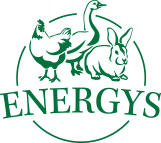Rabbits
Poultry
Laying hens
Quails
Guinea pigs
Pigs
Ostriches
Sheep and goats
Pigeons
Pheasants
Forest animals
Breeding of non-traditional poultry species – Barbary and Mallard
While there are technological procedures for the rearing and fattening of common species and utility types of poultry, there are only few instructions for the so-called non-traditional poultry species, but also for runners with potential for commercial use. In this article you will find basic information on the breeding of Barbary and Mallard ducks.
Neither duck nor goose
The domesticated form of the Muscovy duck is kept in our country mainly in hobby breeding, where it is called Muscovy or Chinese duck. For commercial purposes are then intended bred hybrid combinations of so-called barbarians, which began to be imported from France about eighty years ago.
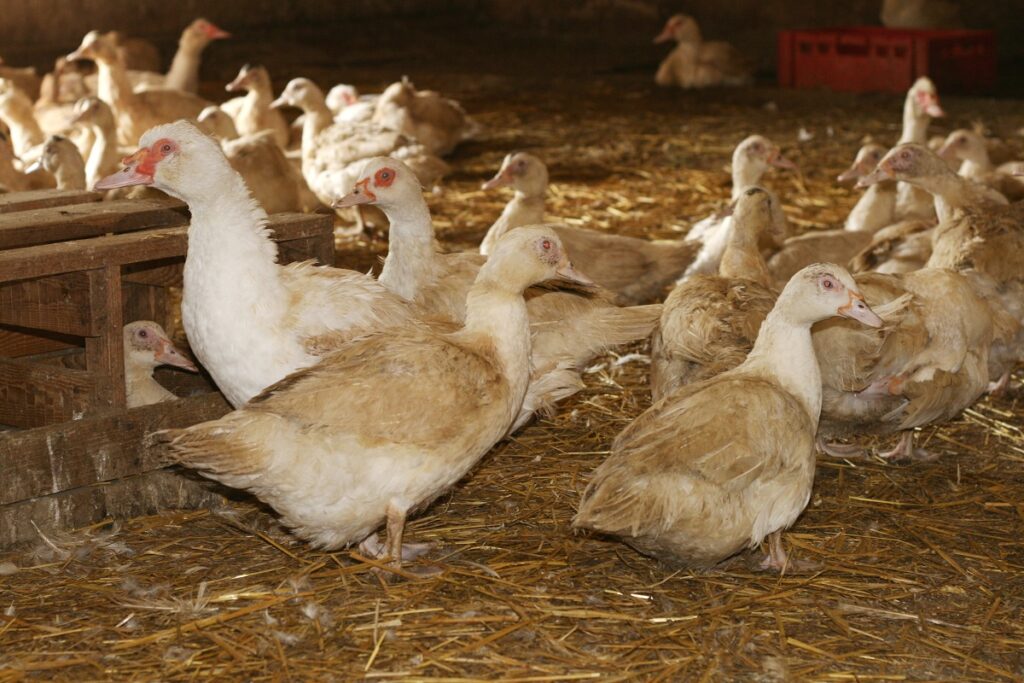
The intensive breeding of barbarians, or husokachen, began in practice only in the 1990s, when the JH Barbaria company, based in Jindřichův Hradec, regularly imported white-coloured parental combinations intended for meat fattening and liver production.
After 200 days of rearing, the flock prepares for the laying cycle, which can be very well influenced by adjusting the light regime in the house and nutrition at any time of the year. During the first laying cycle an average of 90 to 100 eggs are collected from the duck, around 80 eggs in the second and 60 eggs in the third. The incubation period for Barbary ducks is 35 days, with a pre-hatching temperature of around 37,3 °C and humidity of around 70 %. In the brood chamber, where the hatchlings are incubated for the last three days, the temperature is reduced to 36,9 °C and the humidity increases to around 80 %.
Barbary ducks are significantly more expensive to slaughter than Peking ducks. This is due to the higher requirements for ambient temperature, the almost halved laying capacity, the longer hatching period and the longer fattening period. On the other hand, barbarians are characterised by their high fat content without subcutaneous fat. The quality of the meat of this single domestic duck, which does not have the well-known mallard in its ancestry, is unmatched by the meat of other domestic duck breeds.
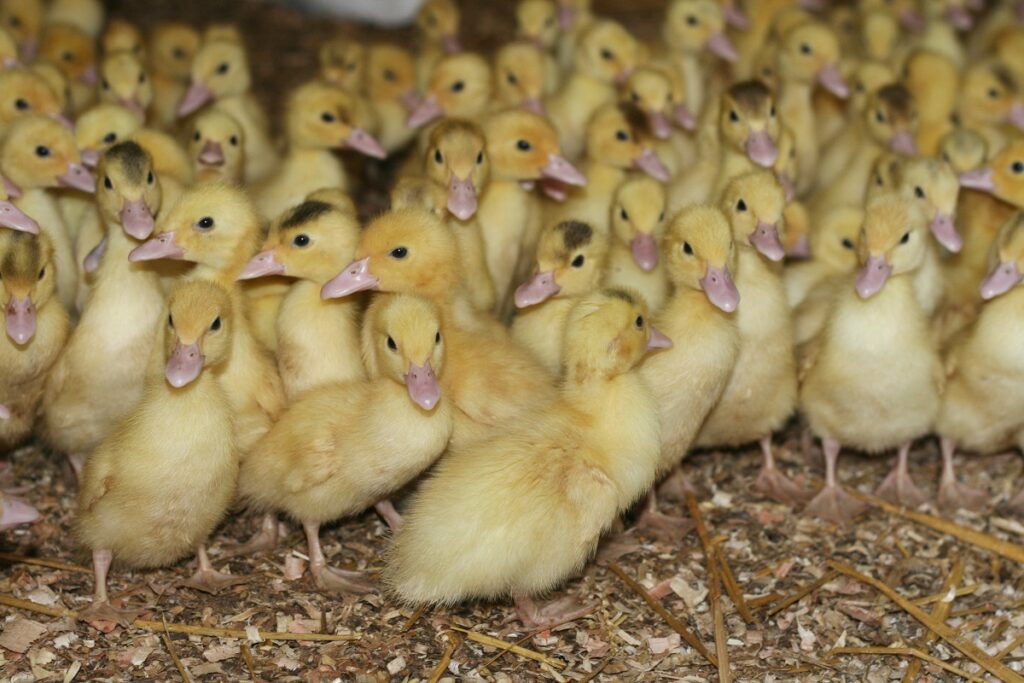
Mallard rearing system
The basic prerequisite for the successful breeding of mallards is a water enclosure, because they mate on water. They are prepared for laying from mid-December onwards, when the feed mixture is replaced by a laying mixture. As the day lengthens, the ducks begin laying eggs after about five weeks, and they will reach full laying after about another three weeks. The hatching eggs are incubated for 25 days at an initial temperature of 37,6 °C and a humidity of 55 %. From day 20, the temperature is reduced by one or two tenths to 37,4 °C. In the hatchery, where the eggs are transferred for the last two days of incubation, the temperature is reduced to 36,8 °C and the humidity increased to 75 %.
Shortly after hatching, the ducklings are transported to the nursery, where they spend about four weeks.Initially, the temperature in the nursery is maintained at around 30 °C, but from day 10 the ducklings are released into a grassy outdoor enclosure. Within three weeks, they get used to the outdoor temperature. As a health precaution, only older ducklings are vaccinated against botulinum toxin at 25 days of age. Standard commercial pelleted feed mixes are used to feed them, with good quality drinking water as a matter of course.
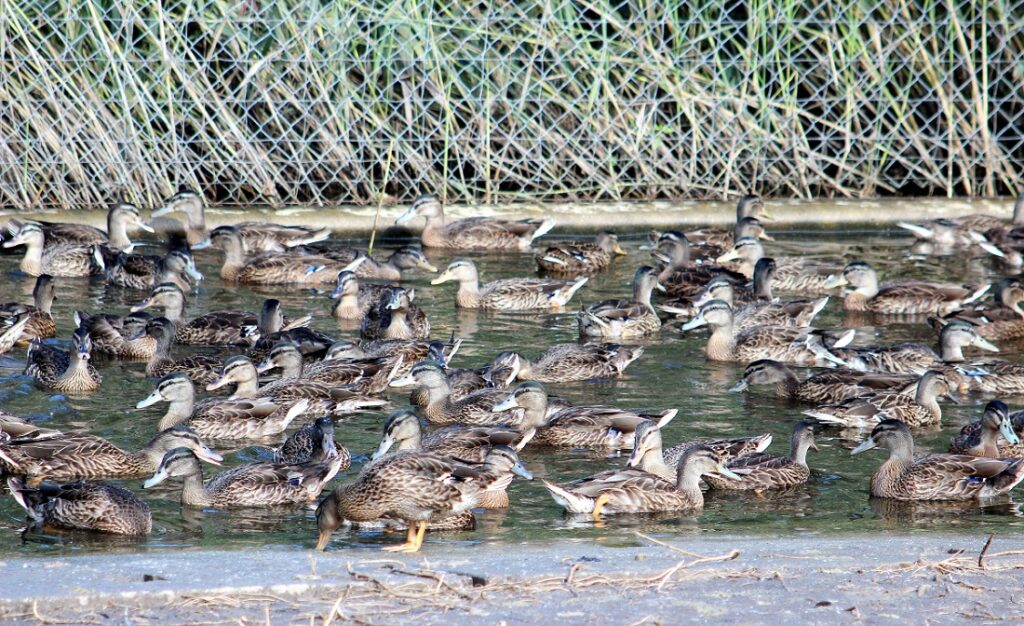
Ducks are selected for breeding in October. The basic selection criteria are their matching colour and weight, which for birds in optimum condition corresponds to 1,4 kg for ducklings and 1,0 kg for ducks. As the mallards produced are usually used to stock hunting grounds, heavier ducks are discarded because they are flightless. This also applies to ducks with colour variations that do not belong in the wild.
Related posts
16. March 2022
When selecting feed (not only) for poultry, it is essential to base it on the purpose of the breeding or fattening phase. Energys hobby feeds accentuate these needs, so you are sure to choose whatever stage of development your poultry is in. But how do you choose the right feed and which is the most…
16. March 2022
When selecting feed (not only) for poultry, it is essential to base it on the purpose of the breeding or fattening phase. Energys hobby feeds accentuate these needs, so you are sure to choose whatever stage of development your poultry is in. But how do you choose the right feed and which is the most…
9. December 2021
While there are technological procedures for the rearing and fattening of common species and utility types of poultry, there are only few instructions for the so-called non-traditional poultry species, but also for runners with potential for commercial use. In this article you will find basic information on the breeding of Barbary and Mallard ducks.
22. February 2021
Spring is the period when chickens start to be fattened in domestic conditions. For the purposes of meat production, it is best to use specially-bred hybrid meat breeds that have the genetic properties of fast growth and high muscle mass. These breeds are called broiler chickens or broilers.
20. November 2020
When feeding and fattening ducks and geese, it is important to be aware of the differences between the main nutritional requirements. Experienced breeders are familiar at least with the basic differences between geese, ducks and Muscovy ducks.
Related products
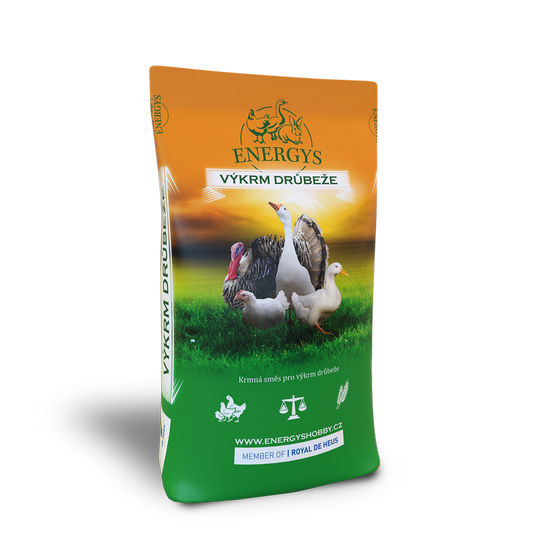
POULTRY UNI 30
A mashed concentrate for fattening of all categories of poultry, which includes the highest quality soja. It is mixed with cereals in a ratio of 20-40% (by type or phase of fattening). It contributes to fast growth and a high meat content. It does not contain coccidiostats.

BROILER MAXI
Feed for the final phase of fattening broilers. Supports a high meat content and a delicate meat taste. Start using it 5 or more days before slaughter. Does not contain coccidiostatics.

BROILER MIDI FORTE
A granulated feed mix for the intensive fattening of broilers from 15 days of age to a minimum of 5 days before ending feeding up. The Coccidiostat included lowers mortality during fattening. For the next phase of fattening Broiler MAXI is a suitable mix.

BROILER MINI FORTE
A ground feed mix with Coccidosistats, for the intensive feeding of broiler chickens up to 14 days of age and a support to fast growth a an excellent state of health in your broliers-

DUCK MINI
A high quality ground mix for fattening ducks and geese up to their 2nd week. It is suitable for fast growth and high meat content.

TURKEY MAXI
Feed for the final stage of turkey fattening. Use from the 13th week of age. It does not contain a coccidiostat.

TURKEY MIDI FORTE
A high quality granulated feed with coccidiostats for feeding turkeys from 5 to 12 weeks of age. It is the basis for fast growth, high meat content and an excellent state of health of your turkeys. The coccidiostat content lowers mortality during feeding. It continues on from feeding with Turkey Mini Forte. The live weight for turkeys at the end of this period should be around 5.9 kg for hen turkeys and 8.9 kg for cocks.

TURKEY MINI FORTE
A ground mix with Coccidiostats for fattening turkeys up to an age of 4 weeks. It is the basis for high meat content. Afterwards use the Turkey Midi Forte mix.

DUCK MAXI
A granulated mix for feeding ducks and geese from 3 weeks of age up to slaughter. The nutrients it contains support fast growth , a high meat content and a delicate meat taste.
